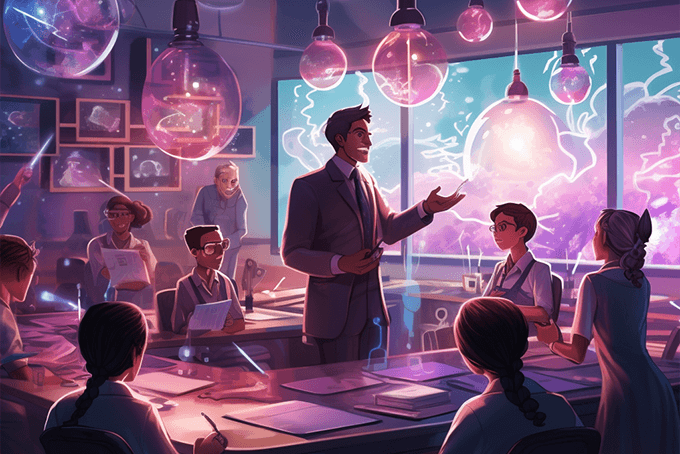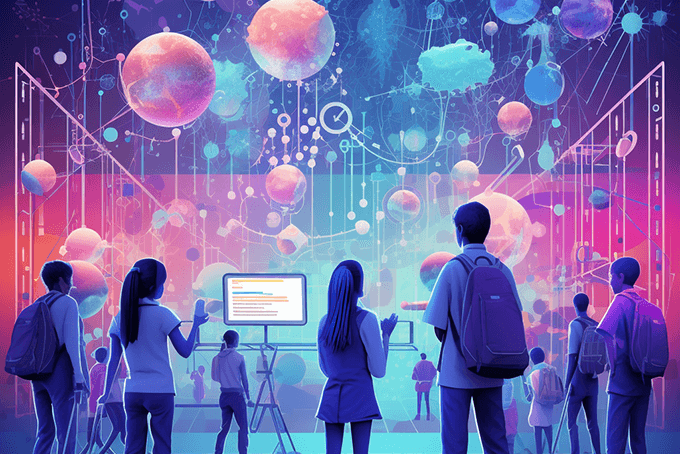I have been an advocate of low-cost science for many years. Mostly, this has been a matter of necessity rather than preference since very few of the schools I’ve taught in have had the budget to purchase off the shelf science equipment for students to use. Science equipment can be ridiculously expensive, far beyond the reach of budget conscious schools and parents.
In almost 30 years of professional education, my students and I have built far more science equipment than I’ve purchased. Not only has this saved many thousands of dollars, but the students learn as much by building their equipment as they do using it. My work with low-cost science has allowed me to work with teachers and students from around the globe, mostly through sharing lesson plans and equipment designs with anyone who wanted them. Yesterday, I took the next logical step – I actually helped teach a lesson to a classroom full of teachers in Bangladesh via Skype.
My colleague is Mr. Rezaul Karim, laboratory instructor at the Bangladesh Teachers’ Training College in the city of Rangpur, Bangladesh. Mr. Karim and I have collaborated on experimental designs and activities before, but this time we wanted to try something more: science by telepresence! We worked together to design a low-cost device that allows the student to separate tap water into hydrogen and oxygen gas using only a 9V battery, two test tubes, and some plastic from a 2-liter bottle. The original design we had tried suffered from poor gas production and other problems. Working together by exchanging photos and messages on Facebook, as well as documents by email, we managed to perfect a device that was simple to build and operate, and would cost less than $2 (most of the cost is in the battery!).
Working at my school, (Tahquitz High School in Hemet, California) I was able to shoot a short video showing the device’s construction and operation. That video was then sent on to the Teachers’ Training College in Rangpur so that the students could view it before the lesson. Unfortunately, problems with downloading the video prevented that, so Mr. Karim and I decided to go ahead with the lesson without the video.
After introducing myself to the students, I was able to demonstrate how the device was constructed, and Mr. Karim took the young teachers through the process of building an apparatus for themselves. There was really very little issue with the language barrier. I was able to speak to the students in English, and Mr. Karim translated for those whose English skills were more limited. The students were able to construct the device with Mr. Karim’s help, and then they tested it as we spoke over Skype.
The students were very excited to have a visiting professor in their class, having a guest from overseas added some extra spice to the daily lesson! They were very excited to see the experiment in action, and to observe that the famous H2O formula for water had a very physical basis in fact! The experiment produces twice as much hydrogen gas as oxygen gas, showing the practical reality of the 2:1 ratio in the formula.
After the lesson, we had a question and answer session. Some of the students asked technical questions, but others asked questions about teaching and specifically about teaching in America. One student asked: “We all know that America is a very rich country; why do you have an interest in low-cost science? Doesn’t the American government provide everything that you need to do your job?” The students were surprised with the answer.
Although America is a very wealthy country and our standard of living is much higher than in rural Bangladesh, the government does not provide everything that we need. I explained that most teachers in the United States purchased many of the supplies that they need for class from out of their own wages, and that classroom educational funding is often squeezed out, leaving the teacher without needed supplies. I also explained that many American parents school their children at home; and for these parents, low-cost science can make the difference between a good laboratory science experience, and no practical science at all.
Ultimately, low-cost science is a matter of social justice. Having the know-how to perform low-cost science experiments can make the difference between great science education and no science education in schools and homes around the world. In a 21st century world that is increasingly science dependent, hands-on science education in every home and school is a key component of educational and economic success.



